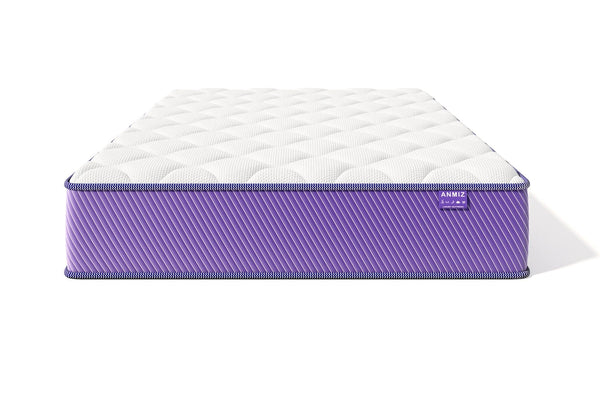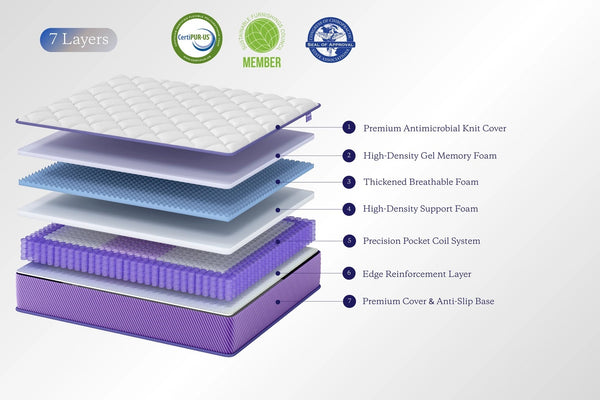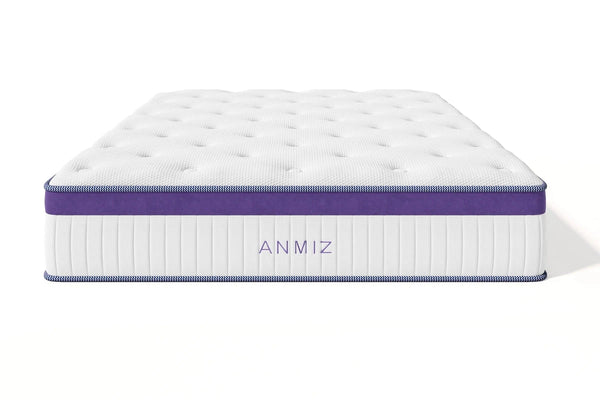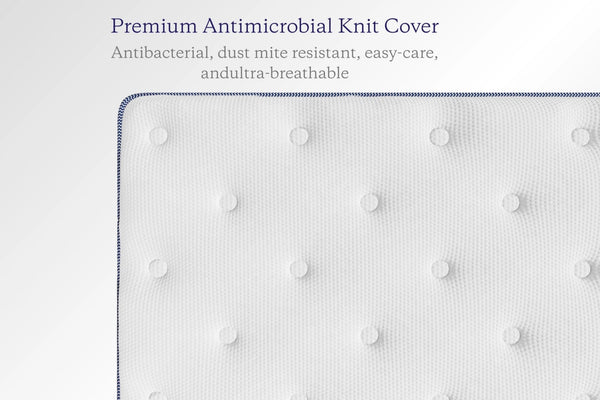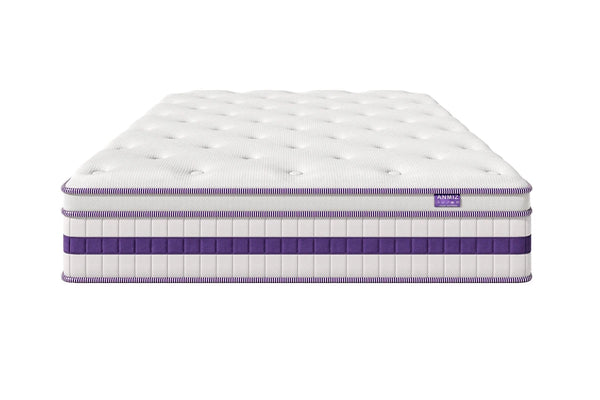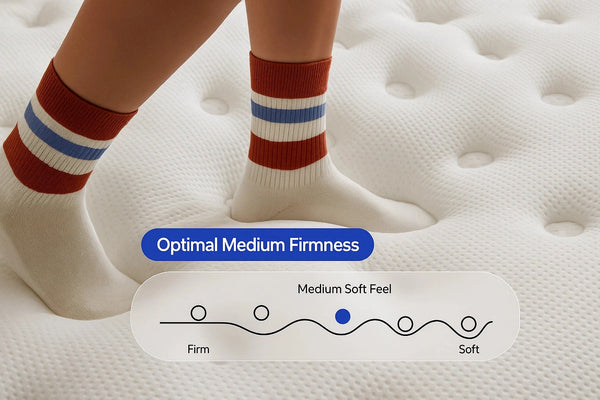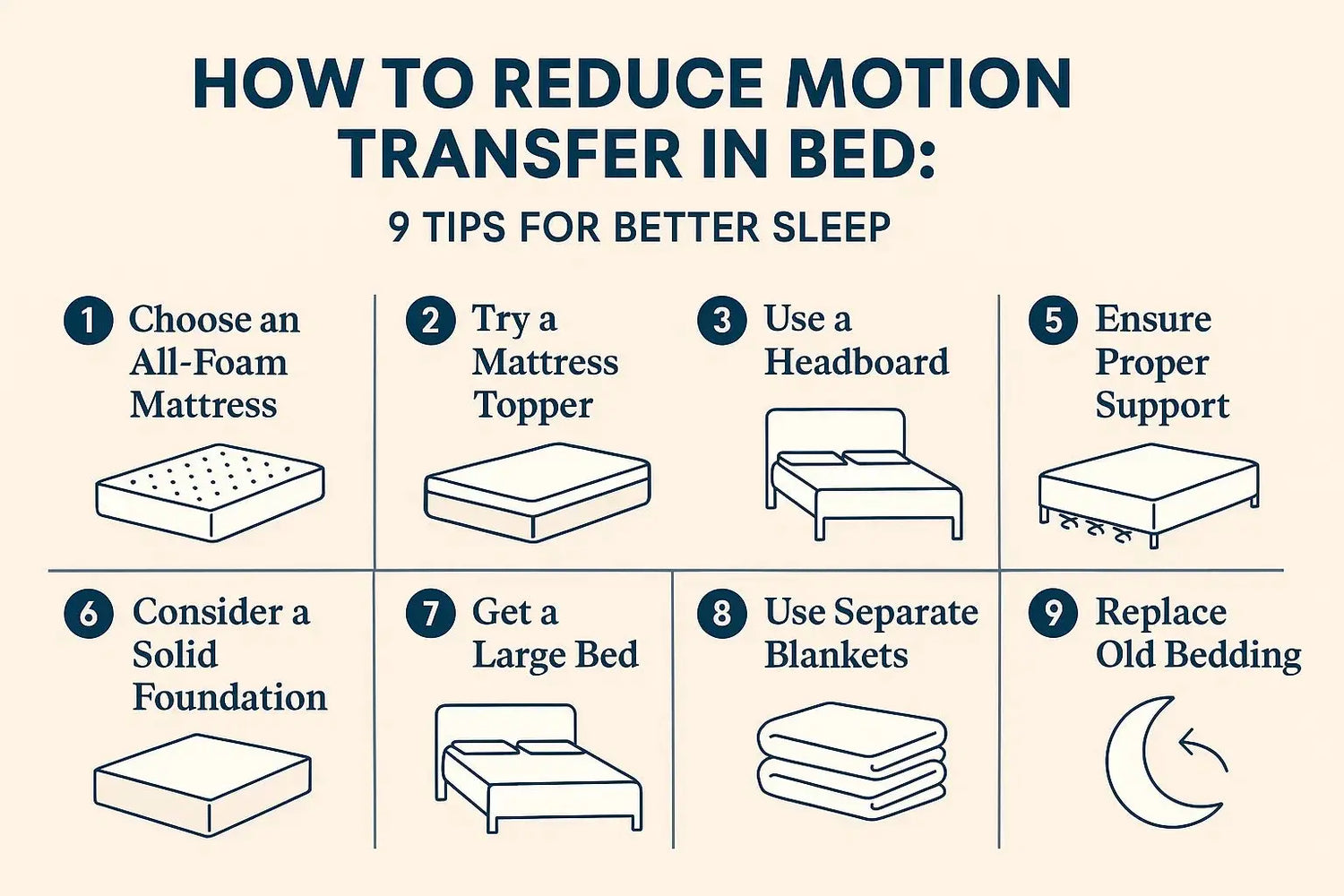
Motion transfer in bed is a common issue, especially for couples. Whether you toss and turn during the night or your partner does, it can disrupt your sleep and lead to a restless night. Fortunately, there are ways to minimize motion transfer and improve the quality of your sleep. Here are 9 tips to help you reduce motion transfer and enjoy undisturbed rest.
- 1. Choose a Mattress with Motion Isolation
- 2. Use a Mattress Topper
- 3. Upgrade to a Hybrid Mattress
- 4. Place a Mattress Protector
- 5. Separate the Bed’s Frame and Slats
- 6. Add a Soft, Thick Comforter or Blanket
- 7. Sleep on Different Sides of the Bed
- 8. Sleep in a Fixed Position
- 9. Consider a Split King Mattress
- Conclusion
1. Choose a Mattress with Motion Isolation
The first step in reducing motion transfer is choosing the right mattress. Mattresses with motion isolation features are designed to minimize movement from one side of the bed to the other. Look for mattresses that use high-quality foam layers, such as memory foam or hybrid designs, that help absorb movement.
Tip: Mattresses with MotionGuard™ or similar technology are excellent at isolating motion and providing a more peaceful sleep MotionGuard™.

2. Use a Mattress Topper
If you already have a mattress and find that motion transfer is still an issue, adding a mattress topper can help. Mattress toppers, particularly memory foam or latex ones, can add an extra layer of cushioning that absorbs and minimizes movement. This can be especially useful if your mattress is too firm or has limited motion isolation.
3. Upgrade to a Hybrid Mattress
Hybrid mattresses, which combine innerspring coils with foam layers, offer the best of both worlds: the support of coils and the motion isolation of foam. The coil system in hybrid mattresses provides minimal bounce, while the foam layer absorbs movement, reducing motion transfer significantly.
Tip: The Anmiz-Y™ technology is known for its superior motion isolation and cooling comfort, making hybrid mattresses a great choice for couples Anmiz-Y™.
4. Place a Mattress Protector
Using a mattress protector can help reduce the impact of motion transfer. While mattress protectors are typically designed to shield your mattress from spills and stains, some models are made from materials that also dampen motion. Look for protectors that are made from thick, breathable fabric to provide extra cushioning.
5. Separate the Bed’s Frame and Slats
The foundation of your bed plays an important role in motion transfer. A solid frame and slats that are well-secured can help minimize movement. If the slats or frame are loose or creaky, they could amplify motion transfer. Make sure your bed frame is sturdy and tight to prevent any extra movement.
Tip: If your bed frame is old or unstable, consider upgrading to one that is designed for minimal motion transfer.
6. Add a Soft, Thick Comforter or Blanket
Adding a thick, soft comforter or blanket to your bedding can help absorb motion. The extra layers of fabric will cushion any movement and reduce the impact on the mattress. A heavy quilt or comforter can make a noticeable difference in motion isolation, especially if you or your partner tend to shift a lot in bed.
7. Sleep on Different Sides of the Bed
If motion transfer continues to be an issue despite your efforts, one simple solution is for each person to sleep on opposite sides of the bed. This may seem like a temporary fix, but it can help reduce movement disturbances between partners.
8. Sleep in a Fixed Position
If you're the one who tends to move a lot in your sleep, try to sleep in a more fixed position to minimize motion transfer. For example, sleeping on your back or side, rather than constantly shifting positions, can help keep the mattress from moving as much.
Tip: Using a body pillow or firm pillow to keep you in a fixed position can help prevent excessive tossing and turning.
9. Consider a Split King Mattress
If you're particularly sensitive to motion transfer, a split king mattress may be the perfect solution. This type of mattress consists of two separate mattress halves that allow each person to control their side's firmness level and reduce the amount of movement they feel from the other side.
Tip: A Therapeutic Support Core™ with integrated technologies like MotionGuard™ offers the ultimate solution for couples who struggle with motion transferTherapeutic Support Cor….
Conclusion
Reducing motion transfer in bed can significantly improve your sleep quality and help you wake up feeling more rested. Whether you’re shopping for a new mattress or simply looking to optimize your current one, these 9 tips will help you minimize disturbances and enjoy a peaceful, undisturbed night’s sleep.









